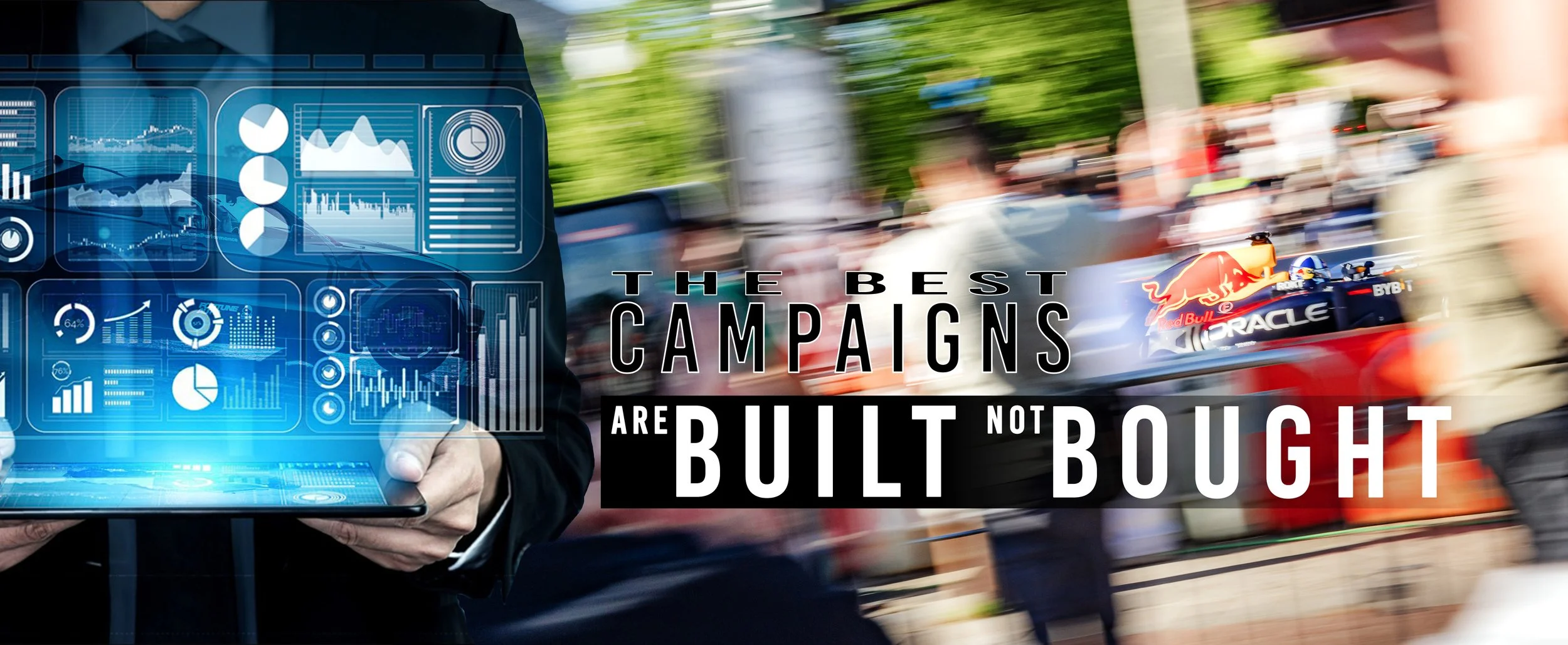5 Ways to Create Data-Driven Marketing Campaigns in Motorsports
In motorsports marketing, gut instincts and flashy branding alone aren’t enough. Brands, teams, and aftermarket companies must embrace data-driven strategies to optimize their campaigns, increase engagement, and drive ROI. Whether you're looking to attract sponsors, boost merchandise sales, or build a loyal fan base, leveraging data is the key to making informed decisions that deliver real results.
Here are 5 ways to create data-driven marketing campaigns in motorsports… that actually work.
1. Use Audience Analytics to Understand Your Fans
Successful motorsport marketing starts with knowing who your audience is, where they engage, and what they care about. Whether you're an aftermarket parts brand or a professional racing team, tapping into data from social media, website traffic, and customer interactions will help shape your marketing strategy.
Key Data Sources to Leverage:
Social Media Insights: Instagram, Facebook, and Twitter analytics show what content resonates most with your audience.
Google Analytics: Understand where traffic comes from and what pages keep users engaged the longest.
Email Engagement Metrics: Track open rates and click-through rates to gauge interest in promotions or sponsorship updates.
Actionable Tip: Create audience segments based on behavior… fans who engage with performance parts vs. those who follow race day updates. Then, tailor your messaging accordingly.
2. Track and Optimize Engagement Metrics in Real-Time
In the fast-paced world of motorsports, marketing teams need real-time data tracking to maximize campaign performance. By continuously monitoring engagement metrics, brands can adjust strategies on the fly to ensure the highest possible impact.
Metrics That Matter:
Video Watch Time & Completion Rates: Know which race highlights or product features keep audiences watching.
Click-Through Rates (CTR): Measure how well your ads and CTAs perform.
Conversion Rates: Determine what percentage of users take the desired action (buying merch, signing up for newsletters, etc.).
Actionable Tip: If an ad isn’t performing well within the first 24 hours, adjust targeting parameters or tweak the creative instead of waiting for the campaign to end.
3. Leverage Predictive Analytics for Smarter Ad Targeting
Motorsport brands and aftermarket companies can predict consumer behavior using advanced analytics. Predictive marketing takes past performance data and applies it to future strategies, allowing brands to optimize everything from sponsorship activations to digital ad placements.
How Predictive Analytics Can Be Used in Motorsports:
Forecasting Sponsorship ROI: Determine which sponsors get the most fan engagement and tailor future partnerships accordingly.
Optimizing Merchandise Drops: Use purchase history data to predict demand for limited-edition releases.
Ad Targeting Refinement: Serve ads to users most likely to engage based on past behaviors.
Actionable Tip: Invest in tools like Google Looker Studio or AI-powered analytics platforms to make sense of large data sets and refine marketing efforts.
4. Personalize Content with Data-Driven Insights
Generic marketing doesn’t work in motorsports; fans expect personalized experiences that match their interests. Brands that use data to customize content, email campaigns, and product recommendations will see higher engagement and conversion rates.
Ways to Personalize Your Motorsport Marketing:
Segment Email Lists: Send different content to casual fans, hardcore racing enthusiasts, and product buyers.
Dynamic Content on Websites: Show different homepage banners based on user browsing history (e.g., a drift-focused page for those who checked out drift-related products).
Tailored Social Ads: Deliver targeted ads based on past interactions with your brand.
Actionable Tip: Use retargeting ads to re-engage users who visited your site but didn’t make a purchase. These highly relevant reminders keep your brand top-of-mind.
5. Measure ROI and Continuously Improve Campaigns
Data-driven marketing isn’t a one-time effort; it’s about continuous improvement. Motorsport brands need to track performance, analyze results, and iterate based on real-world insights.
Key Steps to Measure & Improve ROI:
A/B Testing: Compare different ad creatives, email subject lines, and landing pages to see what works best.
Attribution Models: Determine which marketing efforts (social, email, search ads) contribute the most to conversions.
Post-Campaign Analysis: After every race or product launch, assess what worked and what needs refining.
Actionable Tip: Set clear KPIs (Key Performance Indicators) at the start of every campaign. Without defined goals, it’s impossible to track success effectively.
Final Thoughts
In motorsports, marketing moves at the speed of racing itself… and brands that don’t leverage data are leaving money on the table. By analyzing audience insights, optimizing engagement metrics, using predictive analytics, personalizing content, and continuously refining strategies, you’ll build high-impact marketing campaigns that resonate with fans and drive business growth.
At Pitlane Media & Marketing, we help motorsport and aftermarket brands harness the power of data to maximize engagement, sponsorship value, and revenue. Ready to take your marketing to the next level? Contact us today to create a winning, data-driven marketing strategy tailored for motorsports.


